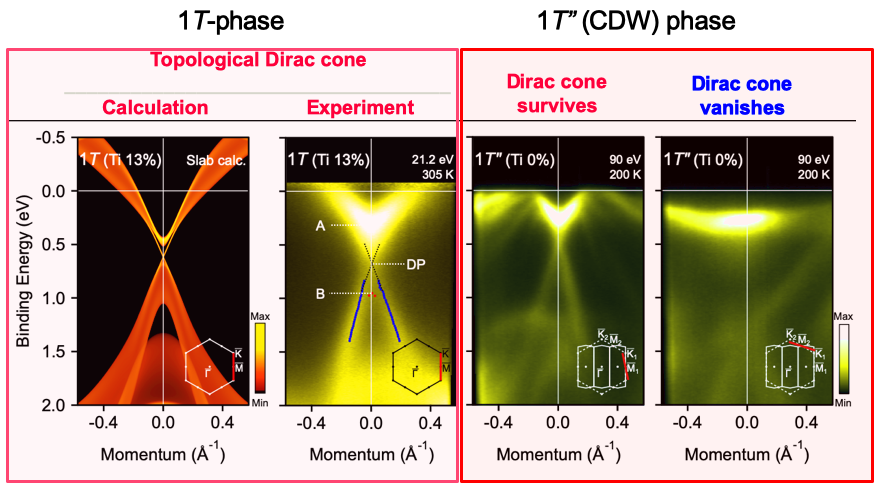Directional modification of band topology by
Charge density wave in VTe2
Topologically nontrivial materials host protected edge states associated with the bulk band inversion through the bulk-edge correspondence. Manipulating such edge states is highly desired for developing new functions and devices practically using their dissipation-less nature and spin-momentum locking. Here we introduce a transition-metal dichalcogenide VTe2, that hosts a charge density wave (CDW) coupled with the band inversion involving V3d and Te5p orbitals (See Figure 1). Spin- and angle-resolved photoemission spectroscopy with first-principles calculations reveal the huge anisotropic modification of the bulk electronic structure by the CDW formation, accompanying the selective disappearance of Dirac-type spin-polarized topological surface states that exist in the normal state. Thorough three dimensional investigation of bulk states indicates that the corresponding band inversion at the Brillouin zone boundary dissolves upon the CDW formation, by transforming into anomalous flat bands (See Figure 2). Our finding provides a new insight to the topological manipulation of matters by utilizing CDWs’ flexible characters to external stimuli.

Figure 1. Electronic band structure of bulk VTe2. The Kz-resolved calculations clearly a non-trivial topological band inversion along Γ-M direction.
As can be seen below, VTe2 in normal 1T-phase exhibits a non-trivial topological electronic structure manifested by three pairs of surface Dirac cones centred at the M-point in the surface Brillouin zone (BZ). Upon introducing CDW instability, two of these pairs completely vanishes, while one survives without any significant changes. To explain such a drastic modification in the topological nature of VTe2 by CDW, we have employed a local orbital framework that can describe the effect of local symmetry changes in real space on the topological ordering of bands in the reciprocal space. We have found that the CDW forms a new set of bonding and anti-bonding states, resulting in a strong but directionally anisotropic hybridization between Te-5p bands and V-3d bands. Such a deformation leads to a triple folding of the BZ, as shown below. Along the folding direction (Γ-Μ1) the CDW hybridization is minimal, meaning that any band inversion along this direction remains intact. Elsewhere, especially along the Γ-Μ2 directions, it grows so dramatically that can easily overcome the spin-orbit coupling that holds the bands non-trivially together. As such, no band inversion, along the Γ-Μ2 directions can take place.

Figure 2. CDW-induced modification of topological band inversion in VTe2.

